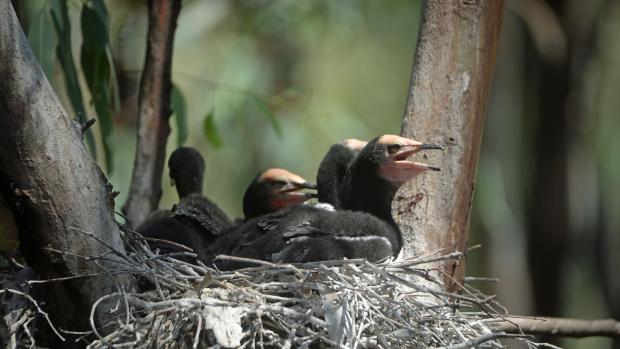Loading
Helping an important wetland

The Little Gunbower Wetland Complex has long been one of the hidden gems of the Mid Murray floodplain.
Its significance to the region was highlighted again last year when it was home to an important bird-breeding event.
As a semi-permanent wetland, the Little Gunbower Wetland Complex has played an important role over history in the broad mosaic of the Gunbower floodplain.
“Interestingly, if all the regulating structures along the Murray River were removed, the Gunbower Forest floodplain would have received water in seven of the 10 years of the recent Millennium Drought, despite the dry,” North Central Catchment Management Authority (CMA) Acting Program Delivery Execuive Manager Rohan Hogan said.
“Instead, with river regulation, only a small amount of water entered the forest in three of those 10 years, reaching only some of the wetlands and none of the broader floodplain.
“As a result, the floodplain is still recovering, and regulation and a changing climate have contributed to a significant loss of habitat across the landscape, and a reduction in the frequency and size of breeding events of colonial nesting waterbirds.
“That is why the Little Gunbower Wetland Complex is so important.”
The Little Gunbower Wetland Complex has been a vital refuge for animals of all kinds, especially in dry years, and it’s important to build resilience for the future.
“Resilience means that if the dry continues, plants and animals can hold on for longer, bouncing back when conditions improve,” Mr Hogan said.
“There are no alternatives when it comes to wetlands in dry times. Watering is the only way to help them cope with the current dry conditions and build resilience for the future.
“By managing the wetland efficiently and effectively we can keep some plants and animals alive in dry times so there is something to build on when conditions improve.”
Mr Hogan said watering in dry times is a key part of managing the wetland successfully, as well as building resilience.
“There were times, before regulation, when lagoons like these could cope with long, dry spells, as well as floods and everything in between,” he said.
“Unfortunately, in an evolutionary click of the finger, we have turned the flows of rivers, lagoons and floodplains upside down, and we expect Mother Nature to simply cope with such rapid change. The result is that these lagoons don’t get anywhere near the water they have had in the past, even when it is wet.
“This is where water for the environment can give Mother Nature a helping hand.”
The efficient and effective management of the Little Gunbower Wetland Complex will continue in the coming weeks with the delivery of about 3.5GL of water for the environment.
“Watering is about the long-term health of the floodplain, including the lagoons, to slowly reverse the damage of regulation and rehabilitate the landscape, where possible,” Mr Hogan said.
“This is water set aside for the waterways and the floodplains. It can’t be used for any other purpose unless there isn't an environmental need for it in our region. And with the dry conditions, there is plenty of need.
“We acknowledge we are in dry times, and we have planned accordingly, in consultation with our Gunbower community reference group.”
Plans for 2019-20 are currently being reviewed to give a much-needed drink to another semi-permanent wetland in Gunbower Forest to ensure that, if dry conditions continue, enough high-quality habitat is available to support waterbirds and other wetland-dependent animals.
The Gunbower water for the environment project is delivered by the North Central CMA in partnership with Goulburn–Murray Water, Murray-Darling Basin Authority, the Commonwealth Environmental Water Office, the Victorian Environmental Water Holder, DELWP and Parks Victoria.
It is part of The Living Murray program, a joint initiative of the New South Wales, Victorian, South Australian, Australian Capital Territory and the Commonwealth governments, coordinated by the MDBA.
